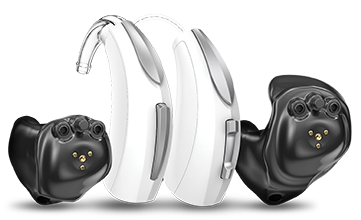Moisture can interfere with hearing aid devices, causing them to malfunction or not work as well as they should. The challenge hearing-impaired people face is that they can’t prevent their hearing aids from coming into contact with earwax or moisture. As a result, proper hearing aid care and maintenance are essential.
This starts with cleaning your hearing aids. Thankfully, the process is fairly simple. After removing your hearing aids, use a wax brush, toothbrush, or cotton swab to lightly brush away any earwax or debris that collects on your device.
Those with in-ear devices should also push out any build-up in the hearing aid’s air hole. Finally, remember to clean both the receiver and microphone to ensure proper operation.


